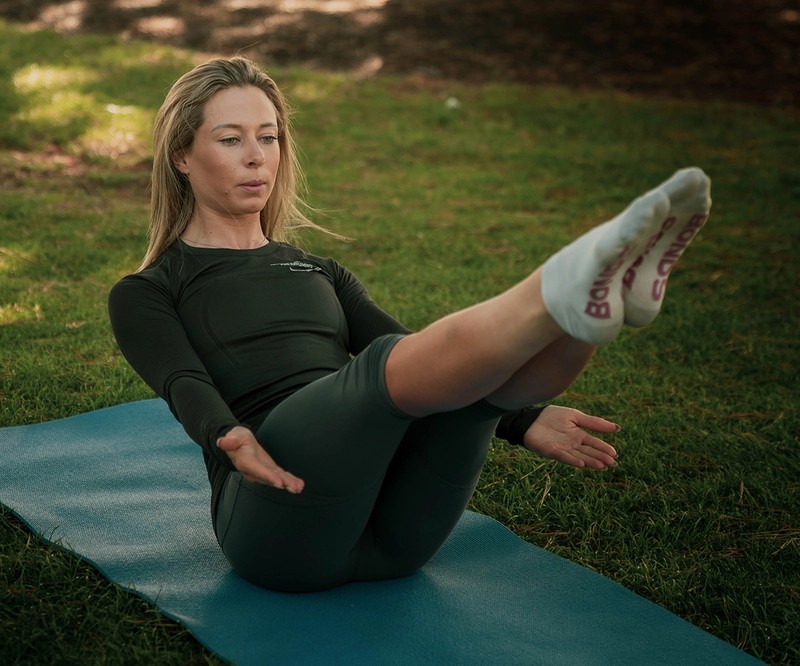Fitness Trackers: Accurate? Or Costly Accessory?

Introduction: Are Fitness Tracker Watches More Than Just a Trend?
Smart technology intertwines with almost every aspect of our daily lives, and the buzz around fitness tracker watches is hard to ignore.
From monitoring steps and workouts, to tracking sleep patterns, these wearable activity trackers offer a comprehensive look into our health and wellness.
But what exactly is a fitness tracker watch, and what does it do?
At its core, it’s a device designed to check and record data related to your daily physical activity – this can include exercise, sleep, and sometimes even stress levels and dietary intake.
The popularity of wearable activity trackers has skyrocketed in recent years. They’ve moved beyond being mere watches and gadgets and have become a staple accessory for both health-conscious individuals and tech enthusiasts.
One key question remains: are fitness tracker watches worth it?
Whether you’re motivated by the possibility of a healthier lifestyle or have questions about how accurate fitness trackers really are, this blog will help you understand the benefits and limitations of these devices.

Part I: The Upsides of Owning a Fitness Tracker Watch
Motivation and Accountability: Your Personal Cheerleader
One of the most compelling reasons to invest in a fitness tracker watch is the boost it gives to motivation and accountability.
A study conducted by Brickwood and colleagues (2019) found that people who used a wearable activity tracker increased their physical activity during the day, including their step count and levels of moderate activity, compared to those who didn’t wear one. A review of the use of electronic activity monitoring systems as an intervention had the potential to increase physical activity levels, as well as behavioural changes for those who are overweight or obese.
Fitness tracking devices can act like a personal cheerleader by providing real-time feedback on your activity levels, along with reminders to move and encouragement to hit daily and weekly activity goals.
Beyond the Basics: Health Metric Tracking and Management
Fitness tracker watches can do more than just count your steps, they work by monitoring several key health metrics including your heart rate, blood pressure, sleep quality and calorie consumption.
Advanced models offer specialised metrics like blood oxygen levels, stress measurement and menstrual tracking – making it easier to recognise patterns in your health, and the capacity to be more proactive about improvement.
Integration and Connectivity: The Power of Synchronization
Depending on the activity tracker of your choosing is how detailed the connection can be between your fitness watch and your smart phone.
Many sync seamlessly, allowing for notifications and calls to be accessed via the watch, with data and tracking information sent through to apps for ease of access on your device – giving you the ability to set reminders and share progress with healthcare professionals or your social circle.
A Comprehensive Health Profile: The Data-Driven Approach
What can make a fitness tracker watch an attractive daily companion is its ability to accumulate data overtime. Inbuilt apps store a historical overview of your health metrics, allowing you to set and monitor achievable goals and track progress. This ability to see long-term trends is ideal for someone trying to lose weight, increase physical activity or manage a health condition.

Part II: The Limitations and Concerns of Fitness Tracker Watches
Accuracy Issues: How Dependable is the Data?
While beneficial overall, fitness tracker watches do have their limitations. The devices offer a lot of data to their wearers; however several studies have shone a light on their accuracy.
Analysis by O’Driscoll and colleagues (2020) compared the results of 40 different activity trackers measuring total energy expenditure. Findings from the results found the accuracy of the devices depended on the activity being measured and found discrepancies depending on the brand and level of the tracker being used.
It’s important to understand that even high-end devices can have errors when calculating complex metrics like total energy expenditure, and either over or under report things such as step count.
Anxious or Empowered? When Tracking Becomes an Obsession Risk
Too much of a good thing can sometimes be a bad thing, and having access to up-to-the-minute data on your physical activity can have the potential to lead to an unhealthy reliance, and a source of stress and anxiety.
An online survey conducted by Ryan and colleagues (2019) suggested using a wearable fitness tracker is an overall positive experience for users, with little risk of negative psychological consequences. While the reports of a negative effect while using a fitness tracker was uncommon, it was found to be more likely for participants when they were unable to use the device.
Maintaining a balanced relationship with your device is key to avoiding any potential downsides.
Privacy and Data Security: Who's Tracking Your Activity?
As discussed, fitness trackers collect and store a wealth of personal information, from your heartbeat to the physical location of your exercise. While companies employ strong data security measures, there is always a risk of data breaches or misuse.
It’s important to read the privacy policy before signing up to a monitoring device or app, to ensure your personal data is safe.

Part III: Cost vs. Value
Price Range: How Much Are You Willing to Spend?
Prices for fitness tracker watches vary, depending on the level of inclusions. Value for money differs for the wearer and what they consider as the most important items to track.
Basic models can start as low as $50, tracking fundamental features like steps. More premium devices can retail for more than $500 and offer a wider range of uses for their wearer, including water resistance and the ability to answer calls through the watch.
Long-term Value: What Makes a Device Worth the Money?
When considering purchasing a fitness tracker, it’s essential to look beyond the price tag and consider the features you deem necessary. The devices can offer valuable health insights and have the capacity to assist you in identifying behaviour patterns long term. What might be valuable for one user like the ability to answer calls and pay for goods and services with the tap of a watch, may not be the same for someone just looking to monitor their everyday activity.
It could be more beneficial to invest more money into a device in the short-term, when considering the potential long-term benefits including reduced healthcare expenses…girl math, anyone?🤔
Is It Worth It for You?
The value of a fitness tracker watch is subjective to the eye of the beholder. It depends on what you are looking for in a device and how seamlessly it will blend into your lifestyle. Take your time comparing models on the market and consider seeking advice from friends and family about what they use, as well as expert advice in-store.
Whether it’s worth it or not is up to the individual.

Part IV: How to Make the Right Choice
Personal Fitness Goals: What Are You Aiming For?
Whether you’re looking to use a wearable activity tracker for the first time or upgrade your existing model, it’s important to consider your fitness objectives.
Are you training for a major event, or do you just want to keep an eye on your daily activity to try and maintain a healthier lifestyle? Your goals will greatly influence what works for your needs.
Lifestyle Compatibility: Will You Actually Wear It?
It’s important to consider your lifestyle when it comes to choosing a wearable activity tracker. Are you a watch person? If not, more discreet options such as wristbands, clip on trackers, and rings are available. If you’re going to wear something daily, it’s important that it’s comfortable for you and your needs.
Consider your activity as well – if you’re an outdoor runner or a swimmer, it would be worthwhile considering water resistant or waterproof options.
Read Reviews
While family and friends are great options and recommended for their input above, customer reviews from across the world can help provide valuable insights into durability and long-term use. Similarly, if considering a product just launched to market, tech reviewers are often given a tracker to trial and will compare with other models.
It’s also important to consider whether a device will work with your existing technology, and whether you need any third-party apps to enhance functionality.

Conclusion: So, Are Fitness Tracker Watches The Money?
The Benefits: More Than Just a Gadget
Activity trackers serve a greater purpose than just simply seeing a step count and checking the time. Depending on the model and the features, they have the ability to offer valuable insights into your health and act as a motivational tool.
Limitations: Take It With a Grain of Salt
There are always risks when it comes to using a type of technology.
There are some limitations and no tracking advice can offer 100% accuracy, and while studies have shown there are minimal negative impacts to mental health, there is the possibility for a user to become overly obsessed with their statistics.
It’s also important to consider privacy policies and data security.
Cost vs. Value: A Personal Decision
Price ranges for fitness trackers vary, with options to suit most budgets depending on the inclusions. The value depends on the purchaser and what their values are.
For some, the health insights and the motivation to increase movement may make a device worth the price tag, but others may not see some inclusions like blood oxygen monitoring and sleep tracking worthwhile.

Final Thoughts: How to Make the Right Choice
If you have decided a wearable fitness tracker aligns with your lifestyle and goals, it’s important to carefully weigh up your options and consider the features important to you before you purchase.
It’s important to choose a device that complements your life, rather than complicates.
At the end of the day, the question of “are fitness trackers worth the money” comes down to an individual’s needs and circumstances. It’s not a one-size-fits-all product, but they can be fantastic tools for those who use them wisely.

Jackson Peos
Jackson Peos has completed a PhD at the University of Western Australia, and has a straightforward approach to nutrition and supplements.
He's completed his BSc in Sports Science, and Exercise & Health, and his BSc (Hons) in Exercise Physiology.
References:
- Brickwood, Watson, G., O'Brien, J., & Williams, A. D. (2019). Consumer-Based Wearable Activity Trackers Increase Physical Activity Participation: Systematic Review and Meta-Analysis. JMIR mHealth and uHealth, 7(4), e11819–e11819. https://mhealth.jmir.org/2019/4/e11819/
- O'Driscoll, R., Turicchi, J., Beaulieu, K., Scott, S., Matu, J., Deighton, K., Finlayson, G., & Stubbs, J. (2020). How well do activity monitors estimate energy expenditure? A systematic review and meta-analysis of the validity of current technologies. fdocuments, 54:332–340. doi: 10.1136/bjsports-2018-099643.
- Ryan, Edney, S., & Maher, C. (2019). Anxious or empowered? A cross-sectional study exploring how wearable activity trackers make their owners feel. BMC Psychology, 7(1), 42–42. https://bmcpsychology.biomedcentral.com/articles/10.1186/s40359-019-0315-y
Related Blogs

How Effective Are Diet Apps for Weight Loss?
Posted by Bulk Nutrients
Estimated reading time: 6 minutes

Why You Need to Track Macronutrients and Not Calories
Posted by Bulk Nutrients
Estimated reading time: 5 minutes

How to Track Progress in Your Fitness Journey
Posted by Ben Disseldorp
Estimated reading time: 4 minutes













































